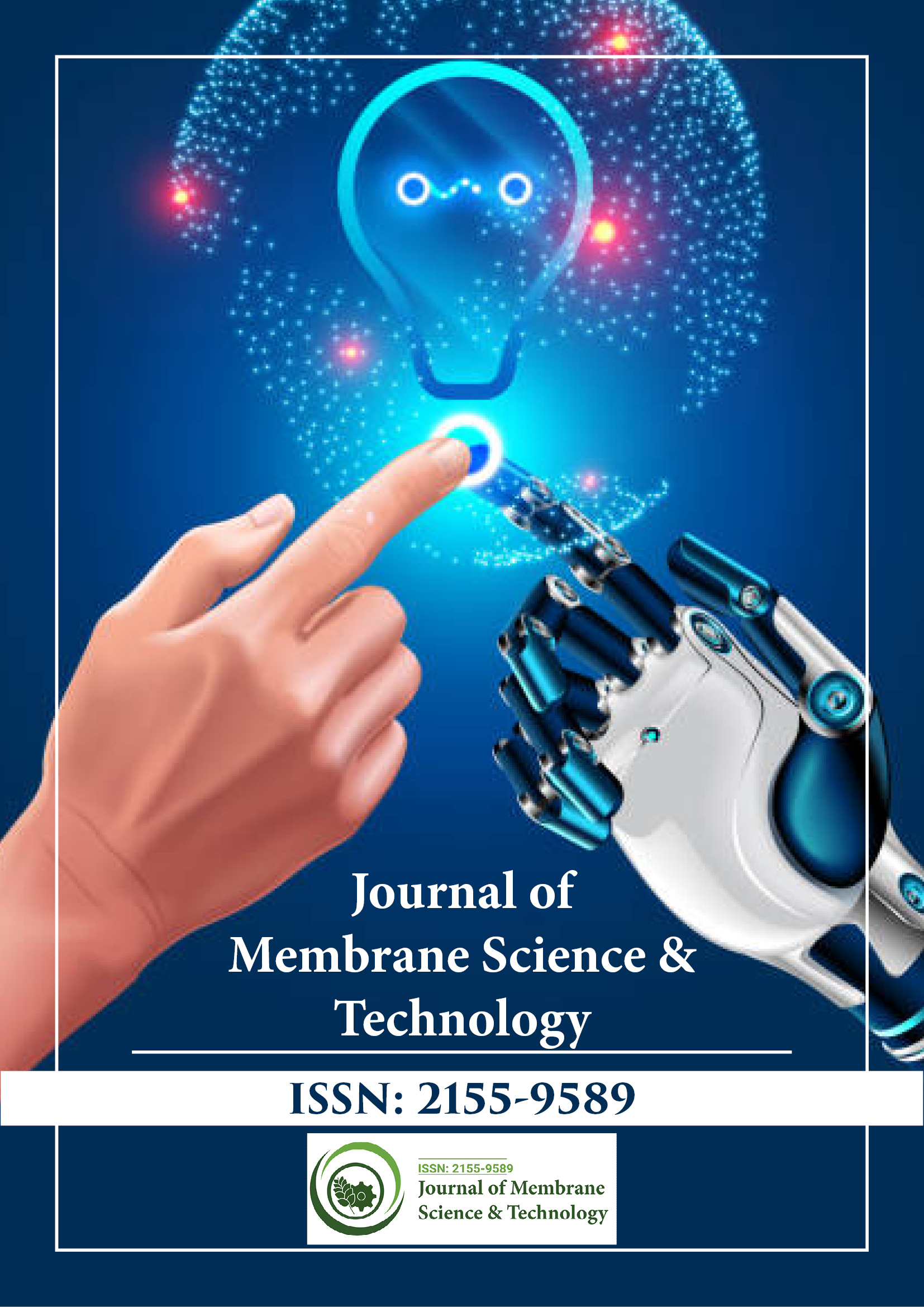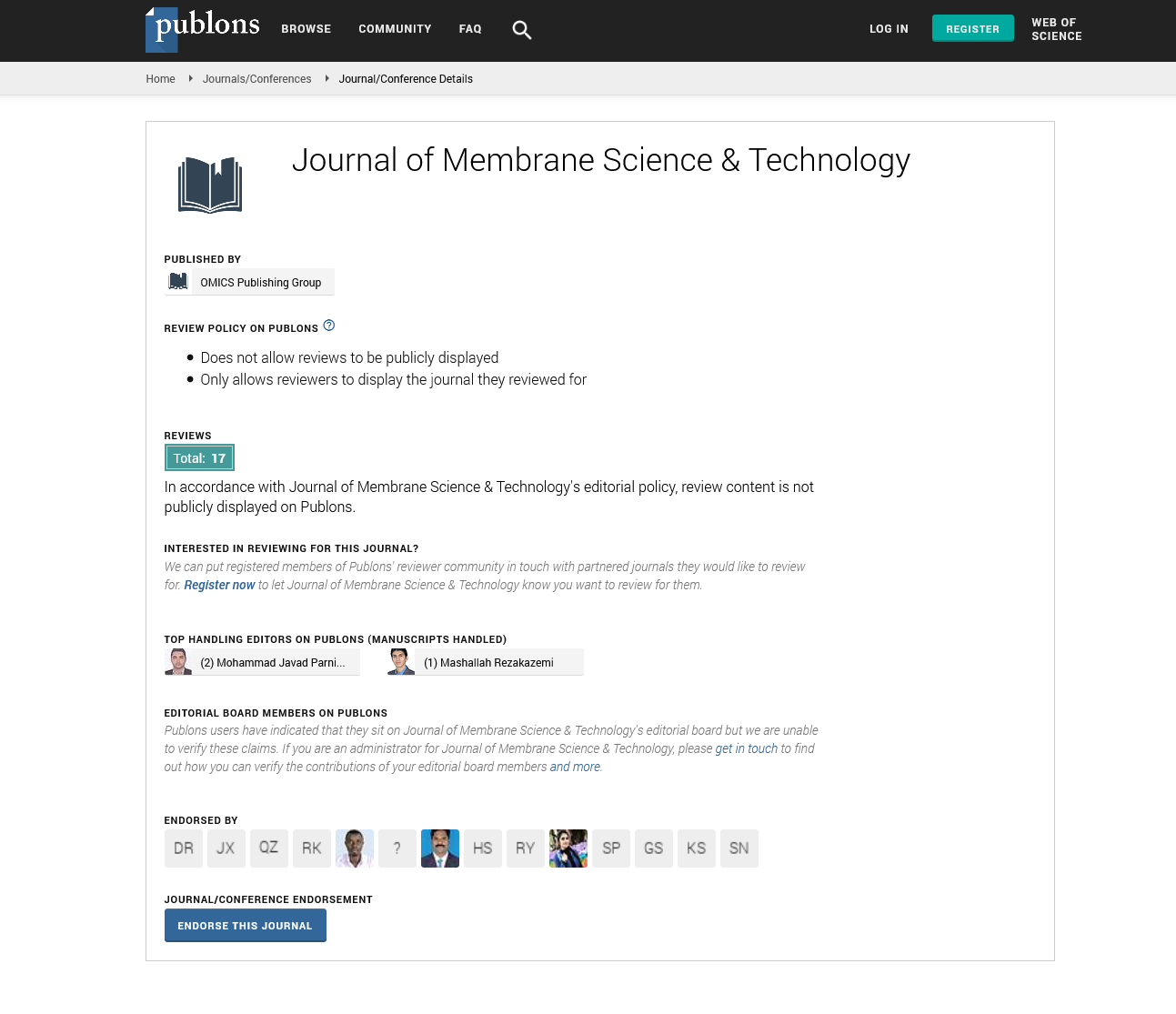Indexed In
- Open J Gate
- Genamics JournalSeek
- Ulrich's Periodicals Directory
- RefSeek
- Directory of Research Journal Indexing (DRJI)
- Hamdard University
- EBSCO A-Z
- OCLC- WorldCat
- Proquest Summons
- Scholarsteer
- Publons
- Geneva Foundation for Medical Education and Research
- Euro Pub
- Google Scholar
Useful Links
Share This Page
Journal Flyer

Open Access Journals
- Agri and Aquaculture
- Biochemistry
- Bioinformatics & Systems Biology
- Business & Management
- Chemistry
- Clinical Sciences
- Engineering
- Food & Nutrition
- General Science
- Genetics & Molecular Biology
- Immunology & Microbiology
- Medical Sciences
- Neuroscience & Psychology
- Nursing & Health Care
- Pharmaceutical Sciences
Commentry - (2025) Volume 15, Issue 2
Mechanisms and Principles Governing Membrane Transport in Biological and Synthetic Systems
Yuan Zhang*Received: 30-Apr-2025, Manuscript No. JMST-25-29439; Editor assigned: 02-May-2025, Pre QC No. JMST-25-29439; Reviewed: 16-May-2025, QC No. JMST-25-29439; Revised: 23-May-2025, Manuscript No. JMST-25-29439; Published: 30-May-2025, DOI: 10.35248/2155-9589.25.15.421
Description
Membrane transport is a fundamental process through which substances move across biological or synthetic membranes. This process is essential to life at the cellular level and critical in many industrial and technological applications involving synthetic membranes. In both contexts, membranes serve as selective barriers, regulating the passage of ions, molecules and other particles. The mechanisms governing membrane transport determine how substances enter and exit cells or compartments, influencing everything from nutrient uptake and waste removal in living organisms to the separation of solutes in water treatment and gas purification systems.
In biological systems, membranes are primarily composed of lipid bilayers embedded with proteins, creating a dynamic and semi-permeable structure. Transport across these membranes can occur through passive or active mechanisms. Passive transport requires no input of cellular energy and relies on concentration gradients, allowing substances to move from areas of higher concentration to areas of lower concentration. Common types of passive transport include simple diffusion, facilitated diffusion and osmosis.
Simple diffusion involves the direct movement of small, nonpolar molecules such as oxygen, carbon dioxide and lipophilic drugs across the lipid bilayer. This process is driven purely by the concentration gradient and does not involve transport proteins. Facilitated diffusion, on the other hand, involves carrier proteins or channels that enable the movement of polar or charged molecules such as glucose or ions across the membrane. Though still passive, this process depends on the presence and specificity of these proteins. Osmosis, a special case of passive transport, refers specifically to the movement of water across a selectively permeable membrane, driven by differences in solute concentration on either side.
Active transport, in contrast, requires energy input usually in the form of Adenosine Triphosphate (ATP) to move substances against their concentration gradient. This type of transport is critical for maintaining cellular homeostasis, such as keeping intracellular concentrations of sodium, potassium and calcium ions at specific levels. One of the most studied examples of active transport is the sodium-potassium pump, which uses ATP to move three sodium ions out of the cell and two potassium ions into the cell, against their respective gradients. Other examples include calcium pumps and proton pumps, which are essential in processes like muscle contraction, nerve impulse transmission and cellular respiration.
In addition to individual molecular transport, cells use bulk transport mechanisms to move larger substances or groups of molecules. Endocytosis involves the engulfing of external materials into vesicles formed from the cell membrane, while exocytosis involves the release of internal substances through vesicle fusion with the membrane. These mechanisms play vital roles in immune responses, neurotransmitter release and nutrient absorption.
Synthetic membrane systems also rely on membrane transport, though the mechanisms are governed more by physical structure and material properties than by biological processes. Synthetic membranes are used in a range of separation processes, such as microfiltration, ultrafiltration, Nano filtration, reverse osmosis, pervaporation and gas separation. Each process utilizes membranes with specific pore sizes and transport characteristics suited to different applications.
In synthetic membranes, transport mechanisms typically include solution-diffusion, pore-flow and facilitated transport. The solution-diffusion model is predominant in dense membranes used for gas separation or reverse osmosis. In this model, molecules dissolve into the membrane material and diffuse through it, driven by a chemical potential gradient. This process is selective and effective for separating small molecules from solutions or gas mixtures.
The pore-flow model is commonly used in porous membranes where the transport occurs through interconnected pores. Microfiltration and ultrafiltration membranes operate primarily via this mechanism, relying on size exclusion to separate larger particles from fluids. Membranes designed for Nano filtration operate on a combination of pore-flow and solution-diffusion, allowing selective passage of small solutes while rejecting larger ones and divalent ions.
Facilitated transport in synthetic systems mimic’s biological mechanisms and is achieved through the incorporation of specific carriers or functional groups that selectively bind and transport target molecules. For instance, certain membranes are embedded with metal ions or organic carriers that enhance selectivity for carbon dioxide over nitrogen in gas separation. These advanced membranes demonstrate how bioinspired strategies can enhance performance in industrial applications.
The efficiency and selectivity of membrane transport in synthetic systems are affected by a range of factors, including membrane material, pore size distribution, membrane thickness, operating pressure, temperature and the presence of fouling agents. Membrane fouling where materials like organic matter, microorganisms, or mineral scale accumulate on the membrane surface can hinder transport efficiency. To combat this, membranes may be modified with hydrophilic coatings, antimicrobial agents, or surface patterning to enhance transport while reducing fouling.
Research in membrane transport continues to evolve with advancements in material science, nanotechnology and computational modeling. Understanding and optimizing membrane transport processes can lead to significant improvements in water purification, energy generation, drug delivery and environmental remediation. For example, the development of aquaporin-based biomimetic membranes designed to replicate natural water channels in cells offers highly efficient and selective water transport, promising breakthrough applications in desalination and wastewater treatment.
Conclusion
In both biological and synthetic systems, membrane transport is not merely a passive conduit but an active, regulated process critical to system performance. As technology advances and global challenges such as water scarcity, pollution and energy demand intensify, the ability to design and control membrane transport at increasingly precise levels will be essential. Understanding the fundamental principles and mechanisms of membrane transport lays the foundation for innovations that will shape the future of science, health and industry.
Citation: Zhang Y (2025) Mechanisms and Principles Governing Membrane Transport in Biological and Synthetic Systems. J Membr Sci Technol. 15:421.
Copyright: © 2025 Zhang Y. This is an open-access article distributed under the terms of the Creative Commons Attribution License, which permits unrestricted use, distribution and reproduction in any medium, provided the original author and source are credited.

